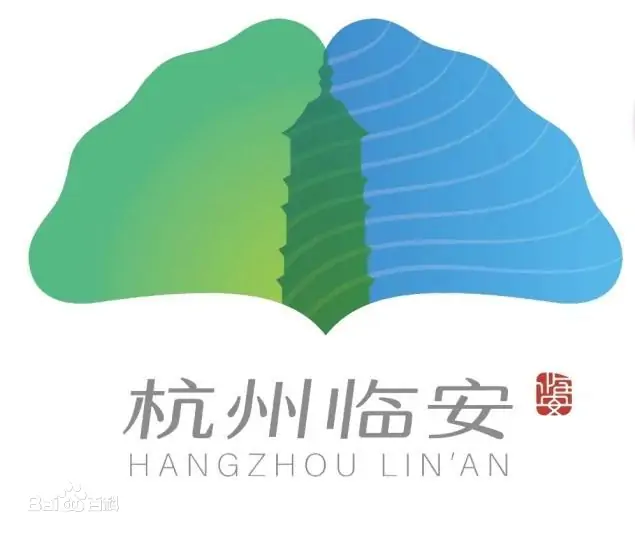Introduction
Lin'an District is a remarkable administrative region within the city of Hangzhou in Zhejiang province, China. Nestled in the northwestern part of Zhejiang, Lin'an borders the Yuhang District to the east and is connected to Fuyang District, Tonglu County, Chun'an County, Shexian County in Anhui Province to the south, and Anji County and Jixi County in Anhui Province to the west. Its geographical coordinates span between approximately 118°51' to 119°52' east longitude and 29°56' to 30°23' north latitude. Lin'an covers a vast area of 3,126.8 square kilometers and is subdivided into 5 streets, 13 towns, and 298 administrative villages. The district's government is located in the Jincheng Street. As of the end of 2022, Lin'an District had a resident population of 648,000 people.
Historical Evolution
Lin'an County's history dates back to the Eastern Han Dynasty, established in the year 211 AD under the name "Linxian County," with its county seat located in Gaohe Village, Gaoxian Township. It was later renamed Lin'an County during the Western Jin Dynasty in 280 AD, owing to the presence of the Lin'an Mountain within its borders. In a significant historical turn of events, it was in the Southern Song Dynasty in 1129 AD when Lin'an, originally known as Lin'an County, was designated as the capital city of the Southern Song Dynasty, which was then renamed "Lin'an Fu." This shift was made to commemorate the contributions of Qian Hongchu, the grandson of the King of Wuyue, Qian Liu, to the Southern Song Dynasty. His hometown, Lin'an, was elevated to the status of a capital city, replacing Hangzhou. The county under Lin'an Fu came to be known as Lin'an County.
The modern Lin'an District was formed through the merger of Lin'an, Yuqian, and Changhua Counties. In ancient times, these three counties lacked a formal administrative structure. During the Qin and Han Dynasties, the land that would later become Lin'an District was part of Yuhang County in Kuaiji Commandery. In the year 211 AD, during the Eastern Han Dynasty, it was split from Yuhang County and established as Linshui County with its seat at Gaoke. In the year 280 AD, during the Western Jin Dynasty, the county's name was changed to Lin'an County, and it remained part of Wuxing Commandery.
Lin'an's Evolution
During the Western Han Dynasty, the area that would become Lin'an was within the jurisdiction of Danyang Commandery, which included areas like Yuxian. The name of Yuxian was later changed to Yuqian during the Eastern Han Dynasty. Changhua County was located within the territory of Yuqian County. During the Jin Dynasty, both Lin'an and Yuqian (including Changhua) were part of Wuxing Commandery. In the Sui Dynasty, they were both part of Hangzhou. In the Tang Dynasty, the county of Zixi was established by dividing Yuqian, and it shared its administrative region with Lin'an and Yuqian under the jurisdiction of Yuhang Commandery in Hangzhou. In the Northern Song Dynasty, the third year of Jingding (978 AD), Zixi was renamed Changhua County.
Under Different Dynasties
During the Tang Dynasty, Lin'an was part of the Yuhang Commandery. In the Southern Song Dynasty, Lin'an was the capital of Lin'an Fu, while during the Yuan Dynasty, it was under the jurisdiction of Hangzhou Road. It became part of Hangzhou Prefecture in the Ming Dynasty, and in the early years of the Hongwu Emperor's reign (1368 AD), the county seat was moved to the right of Taimiao Mountain in Dongshi. During the Qin Dynasty, Yuqian belonged to Zang Commandery.
Changing Administrative Status
In the early years of the Republic of China (1912), the regional administration was abolished, and the area directly reported to the provincial government. In 1935, it came under the jurisdiction of the Ninth Administrative Inspection Zone of Zhejiang Province. In 1948, it was transferred to the Ninth Administrative Inspection Zone, which had its office in Yijin Town, Lin'an County. After the liberation of Lin'an, Yuqian, and Changhua in 1949, they became part of Lin'an Special Zone. In 1953, Lin'an Special Zone was abolished, and the area was included in Jiaxing Special Zone. In 1955, Yuqian and Changhua were transferred to Jiande Special Zone. In 1957, Lin'an County was included in Jiande Special Zone. In 1958, Yuhang County was abolished, and it was merged into Lin'an County. Similarly, Yuqian County was abolished, and it was merged into Changhua County. In the same year, Jiande Special Zone was dissolved, and Lin'an and Changhua were incorporated into Jiaxing Special Zone. In 1960, Changhua County was abolished, and it was merged into Lin'an County, which was placed under the leadership of Hangzhou. In 1988, it was approved by the State Council to be included in the Chinese Coastal Economic Opening Zone. In 1996, Lin'an was upgraded from a county to a city.
Municipal Restructuring
In 2014, the Hangzhou Municipal Government proposed plans to dismantle Lin'an's city status and establish it as a district. Subsequently, on July 11, 2016, the 11th Hangzhou Municipal Committee approved the proposal to convert Lin'an from a city to a district. On July 15, 2017, the State Council officially approved the dissolution of Lin'an as a county-level city and the establishment of Hangzhou's Lin'an District. The administrative boundaries of the new district were the same as those of the former Lin'an city, and the district government's office is located at 398 Yijin Street, Jincheng Street.
A Unique Identity
In May 2023, Lin'an District unveiled its city image logo during the second Wu-Yue Culture Festival. Designed by a team from the China Academy of Art, the logo prominently features shades of green and blue, incorporating two ginkgo leaves, a heroic monument, and the words "Hangzhou Lin'an" and the official seal of Lin'an. The logo artfully represents Lin'an's ecological beauty, cultural heritage, architectural charm, and scientific and technological innovation. This amalgamation symbolizes the district's commitment to showcasing its ecological, cultural, and technological beauty.
